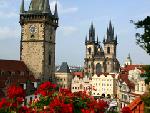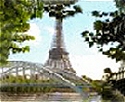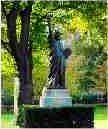Prefabricated Construction
Elements of the structure were
assembled at Eiffel's factory in Levallois-Perret at the fringes of
Paris. Each of the some 18,000 components were both riveted and bolted
together, in the factory, to make five meter long pieces that were then
transported to the construction site. There, the bolts were removed by
Eiffel's experienced crews [most of whom were veterans of his bridge
building activities], being replaced by thermal rivets. Only about a
third of the 2.5 million rivets were inserted at the site during the 22
months of tower erection. During construction, there were between 150
and 300 workers at the location. The rapid erection of the tower is a
testament to Eiffel's adroitness in managing large engineering
projects. He met his deadlines with clockwork precision.
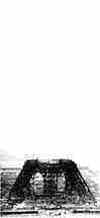
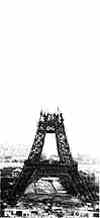
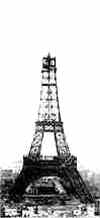

| Mar. 15, 1888 |
Sept. 15, 1888 |
Dec. 26, 1888 |
Mar. 12, 1889 |
Accident Prevention
The risk of accident was great for, unlike modern skyscrapers, the
tower was an open frame without any intermediate floors -- just the
three platforms. And because the tower was erected in just a little more
than a year, one would think that the risks would have been elevated.
Yet, because Eiffel took good care of his workers using movable
scaffolding, safety netting, guard-rails and screens, only one man died
[during the period that the Otis Elevators were being installed] --
which was remarkable at the time. This accident resulted from the man
showing off, on the first level, for his girl friend below.
Construction Completion
The tower was completed on March 31, 1889; before the unfurling of
the French flag and a 21 canon salute, Eiffel climbed the steps leading
to the third level. Here, he lead a group of the famous around the
narrow platform before receiving the Legion d'Honour there at the top.
It had cost him a total of 7,800,000 gold francs.
Below: Eiffel Tower
Opening, 1889 |
|
|
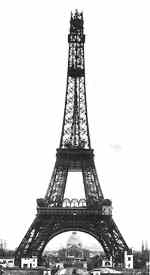
Tower Opening
The Prince of Wales [later King Edward VII of England] officiated at
the ceremonial opening celebrating the science and engineering
achievements of its age. The tower soared 300m [984 feet] or 320.75m
[1,052 feet] including antenna. Its structure consisted of two visibly
distinct parts: a base composed of a platform resting on four separate
supports [called pylons or bents] and, above this, a slender tower
created as the bents taper upward, rising above a second platform to
merge in a unified column weighing 7000 tons.
Tower Life Extended
Original Permit for 20 Years
Originally, Eiffel had a permit to leave the tower standing for 20
years. This was a period calculated to allow him to more than recuperate
his expenses. In 1909, at the expiration of original 20-year lease, the
tower was almost torn down. Its salvation lay in the fact that its
antenna was used for telegraphy. Since the tower was valuable for
communication purposes, it was allowed to remain beyond the end of the
permit.
Radio
Transmissions Influenced Permit Extension
Since the beginning of the 20th century the Eiffel Tower has been used
for transmission purposes.
Beginning in 1910 it became part of the International Time Service.
Commencing in 1918, French radio maintained an aerial on the tower and
began regular transmissions from the tower in 1922. Since
1957 the Eiffel Tower has also been used for FM and TV transmission.
Until the 1950s, there was a triangular shaped antenna, consisting of
several wires which ran from the top to anchor points on the
Champs-de-Mars. This antenna, which was used for long wave transmission,
was fed by transmitters located in small shelters on the Champs-de-Mars.
|












